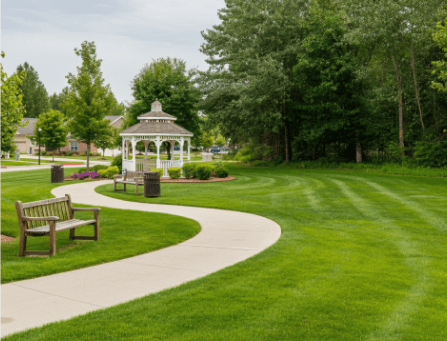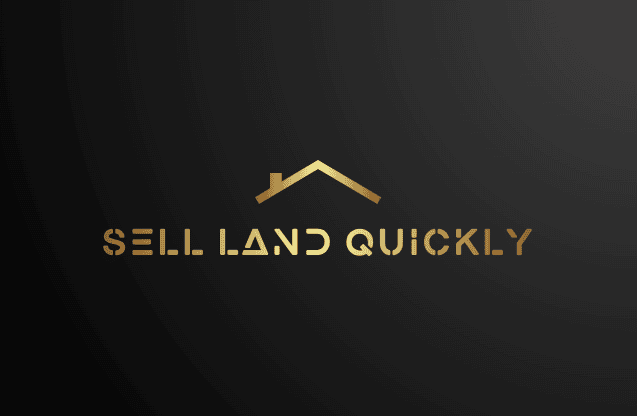Understanding who owns common area of land in an HOA can be a complex but essential matter for homeowners. Did you know that nearly 60% of homeowners in the United States live in communities managed by a homeowners’ association? These common areas, which may include parks, pools, or sidewalks, are often legally owned by the HOA but are maintained using funds contributed by homeowners. Real estate experts Steve Daria and Joleigh, known for their expertise in land investments and buying property for cash, emphasize the importance of understanding these details to avoid surprises. Navigating the rules and responsibilities tied to shared spaces can directly impact your property value and quality of life. Whether you’re looking to buy a home or already own one, knowing who owns common area of land in an HOA can empower you to make more informed decisions. Don’t leave questions unanswered—book a free discussion today with trusted professionals for tailored advice on HOA land ownership. Your peace of mind starts with the right knowledge!
What is a common area in an HOA?
A common area in an HOA refers to shared spaces within a neighborhood or community that are accessible to and enjoyed by all residents.
These areas often include amenities like parks, sidewalks, swimming pools, or clubhouses.
The maintenance and upkeep of these spaces are typically funded by HOA fees, which homeowners contribute to on a regular basis.

While the HOA is usually the legal owner of these common spaces, homeowners gain access and use of them as part of their property rights.
Understanding who owns common area of land in an HOA is important because it clarifies the roles and responsibilities for maintaining these spaces.
For instance, the HOA board is responsible for organizing repairs or landscaping, ensuring the community remains appealing and functional.
Homeowners cannot make individual changes to common areas without approval from the HOA, as these spaces are managed collectively.
Whether you’re a homeowner or considering becoming one, gaining insight into the function of common areas can deepen your understanding of your community and your place within it.
Get Started: Get Your Cash Offer Below…
We are direct land buyers. There are no commissions or fees and no obligation whatsoever. Start below by sharing where your property is and where we can send your offer…
Who typically owns the common areas in an HOA?
Typically, the common areas in an HOA are owned by the homeowners’ association as a whole, on behalf of all the community’s residents.
These shared spaces can include parks, sidewalks, clubhouses, or pools, which are accessible to everyone in the neighborhood.
The HOA, as the legal owner, is responsible for overseeing the maintenance, repairs, and overall management of these areas.
Homeowners contribute to the upkeep of these spaces through HOA fees, which are collected on a regular basis.
Understanding who owns common area of land in an HOA is essential for clarifying financial obligations and use rights for all residents.
It’s worth noting that individual homeowners typically do not have direct ownership or decision-making power over common areas.
Instead, decisions regarding these spaces are made collectively by the HOA board to benefit the entire community.
This collective effort ensures access to well-maintained amenities for all, fostering increased property values and greater neighborhood satisfaction.
How are common areas maintained in an HOA?
- Regular Landscaping Services: HOAs often hire professional landscaping companies to maintain green spaces, parks, and gardens. This ensures the neighborhood looks attractive and well-cared for, benefiting everyone, especially when understanding who owns common area of land in an HOA.
- Routine Repairs and Upkeep: Scheduled maintenance includes repairing sidewalks, pool areas, and community centers to ensure they remain safe and functional. HOA fees paid by residents cover the costs for these repairs.
- Cleaning and Sanitation: HOAs arrange for regular cleaning of shared amenities, such as clubhouses and gym facilities, to maintain hygiene standards. This prevents potential health risks while ensuring these areas remain enjoyable for all.
- Managing Utility Services: Utilities like lighting for common streets and water for shared amenities are monitored and paid for by the HOA. Proper management ensures these services run smoothly and avoid interruptions.
- Annual Maintenance Reports: Most HOAs provide annual updates on how funds were used to maintain common areas. These reports keep residents informed and may highlight who owns common area of land in an HOA for better transparency.

What rights do homeowners have regarding access to common areas?
Homeowners in an HOA have the right to access and use the designated common areas, such as parks, pools, and walking trails, to enjoy their community amenities.
These rights are typically granted to all residents as part of the deed or membership within the association.
However, access may be subject to the HOA’s rules, such as operating hours or specific usage restrictions, to ensure shared spaces are managed fairly and respectfully.
It is important to remember that these common areas are maintained with funds from HOA fees that all homeowners contribute.
Understanding who owns common area of land in an HOA can help clarify the balance between resident rights and the HOA’s responsibilities.
Homeowners are not allowed to modify or restrict access to these spaces, as they are meant for the collective benefit of all members.
If access rights are violated or unclear, residents can refer to the HOA’s governing documents or attend board meetings for clarification.
Having a clear understanding of these rights fosters a sense of community and ensures fair use of shared amenities.
What happens if a common area is damaged or requires major repairs?
- Reporting Damage: Homeowners or management should promptly report any damage to the HOA board, whether it involves a broken facility or a fallen tree. Fast reporting makes resolving the issue easier and prevents further problems.
- Evaluating the Repair Needs: The HOA board reviews the damage, sometimes bringing in professionals for detailed inspections and cost estimates. Careful evaluation ensures repairs are done right and are cost-effective.
- Funding Major Repairs: Major costs are covered through the HOA’s reserve funds or by collecting additional fees if reserves are low. This is fair since it matches who owns common area of land in an HOA—everyone benefits from the repairs.
- Hiring Professional Contractors: The HOA board hires qualified contractors to complete the work. Choosing licensed professionals guarantees that repairs are safe and of high quality.
- Communicating with Homeowners: The HOA keeps residents informed about timelines, costs, and any potential disruptions that may affect them. Clear communication keeps everyone informed and involved in maintaining shared spaces.
- Inspecting Completed Repairs: After work is completed, HOA board members or a manager will verify that everything is done correctly. This step helps restore the area to a safe condition for all use.
- Reviewing Preventive Measures: The HOA reviews the cause of the damage and looks for ways to prevent it from happening again. Learning from incidents helps protect shared spaces and limits future repair costs.
How can I participate in decisions about my HOA’s common areas?
Homeowners have numerous impactful opportunities to participate in decisions about their HOA’s common areas, ensuring their voices are acknowledged and their concerns effectively addressed.
Stay engaged by attending board meetings to share ideas, ask questions, and stay informed on community plans.
These meetings provide a great opportunity to engage with board members, learn about upcoming projects, and discuss any maintenance needs or improvements for shared spaces.
Reviewing your HOA’s governing documents and community guidelines is also important, as these documents typically outline the procedures for residents to submit suggestions, requests, or formally propose changes to common areas.
If you want to contribute more directly, consider joining a committee focused on topics like landscaping, amenities, safety, or budgeting, where your ideas can help shape specific projects or policies.
Voting in annual or special HOA elections empowers you to influence who will represent and advocate for your interests on the board.
Staying informed about who owns common area of land in an HOA will help you understand your rights and responsibilities as part of the community.
For those unable to attend meetings in person, you can often access meeting minutes, send emails, or connect with board members through newsletters or community websites to remain involved.
Take the initiative today—reach out to your HOA board and start having a positive impact on your neighborhood!
Takeaway
- The HOA Shares Common Areas: The homeowners’ association typically holds ownership of the community’s common areas. This ownership allows the HOA to manage these spaces for the benefit of all residents.
- Ownership Comes with Shared Responsibility: Homeowners collectively fund the maintenance and upkeep of common areas through regular HOA fees. This shared financial responsibility ensures the amenities are well-maintained and available to everyone.
- Governing Documents Define Ownership Details: Each HOA’s governing documents outline specific rules about common area use and ownership. Reviewing these documents helps homeowners understand who owns common area of land in an HOA and how these spaces are managed.
- The HOA Board Oversees Common Area Decisions: The HOA board is responsible for making decisions about repairs, upgrades, and regulations for the common areas. Residents can influence these decisions by participating in board meetings or committees.
- A Well-Maintained Common Area Enhances Property Value: Properly maintained shared spaces significantly improve the overall appeal of the community. This can significantly contribute to higher property values for all homeowners.
**NOTICE: Please note that the content presented in this post is intended solely for informational and educational purposes. It should not be construed as legal or financial advice or relied upon as a replacement for consultation with a qualified attorney or CPA. For specific guidance on legal or financial matters, readers are encouraged to seek professional assistance from an attorney, CPA, or other appropriate professional regarding the subject matter.
